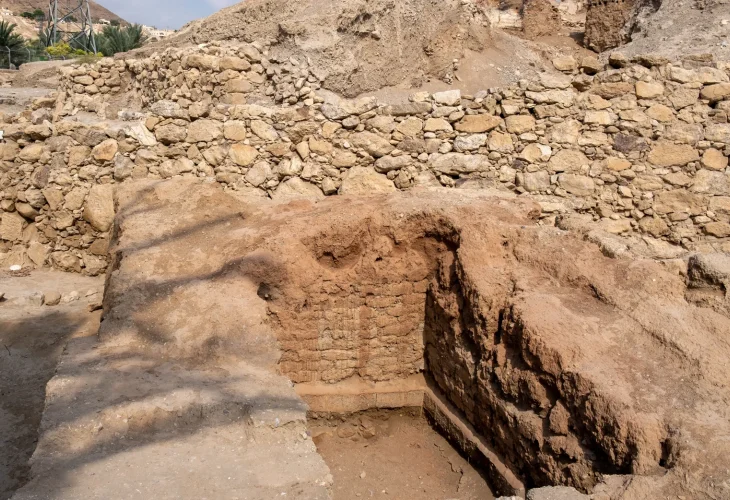The Fall of Jericho: Archaeological Revelations
Jericho's large stockpiles of food suggest the city fell swiftly at its peak, not through a siege as typical with Egyptian tactics.
 (Photo: shutterstock)
(Photo: shutterstock)The conquest of Jericho is among the most celebrated stories in the Bible. The collapse of its formidable walls has captivated humanity for generations. An example of this influence is seen in one of World War II's iconic weapons, the Stuka. This German dive bomber instilled fear in enemy soldiers. Horns, dubbed the Jericho Trumpets, were mounted on the Stuka's wings, producing a terrifying noise as the plane dove to bomb its target. These Jericho Trumpets became emblematic tools of Nazi propaganda. Jericho's capture is symbolic of a total victory, a complete collapse of enemy defenses before the battle even begins.
At the onset of archaeological excavations in Israel, archaeologists eagerly sought ancient Jericho. They identified it as the site of 'Tell es-Sultan.' Here, they found a typical Canaanite city surrounded by a large double wall. The city was burnt, and the walls were toppled. The burning of the city was attributed by archaeologists to warfare. However, the cause of the wall's collapse remained unclear. There were no signs of the wall being breached through conventional military means. Some archaeologists suggested that the walls were destroyed by tunnels dug underneath, but this theory was debunked by others for various reasons.
One of the first archaeologists to date the city was British archaeologist John Garstang. Garstang dated the wall's construction to roughly two hundred years before the Exodus and its fall to the period of Joshua's entry into the Land of Israel.
In 1952, British archaeologist Kathleen Kenyon began excavations at Jericho. She started digging at Tell es-Sultan to verify the accuracy of conclusions drawn by previous archaeologists.
She dated the wall's construction to the Middle Bronze Age, about five hundred years before the Exodus, and its collapse to around two hundred years before Joshua's entry. According to her dating, there was no wall around Jericho when Joshua and the Israelites entered the land.
This conclusion was the accepted scientific consensus for years, and no one questioned that the wall of Jericho was destroyed roughly two hundred years before Joshua's entry.
That was until Dr. Bryant G. Wood came along. Dr. Wood, an American archaeologist, chose to re-examine the methods underlying Kathleen Kenyon's conclusions. His findings shed light on Tell Jericho, providing a better understanding of the findings.
He agreed with Kenyon regarding the construction date of the wall but disputed the dating of the city's burning and the wall's collapse. He found numerous pottery artifacts from the period of the Israelites' entry. How could these artifacts exist if the city had been destroyed before their arrival? Dr. Wood explained that Kenyon made an error by searching for specific, high-value pottery from the time of the Israelite invasion, Cyprus-imported ceramics. Not finding them led her to conclude that the city was destroyed before such items were available. However, she overlooked the other utensils that were found, which indeed date to the entry period—ordinary household items used daily. Dr. Wood noted that Kathleen Kenyon's excavation site was extremely limited, two squares 26 by 26 feet, in a poor section of the city. Why would one expect to find expensive Cypriot artifacts in a poor area?
The most fascinating aspect of Dr. Wood's research was the manner of the wall's collapse and the city's conquest. Typically, a fortified city falls after a prolonged siege. During the siege, supplies run out, defenders weaken, and the city succumbs to the enemy. However, the large food reserves found in Jericho indicate the city was not conquered by siege but rather all at once, while still at full strength.
And the most astonishing part: there is evidence the wall fell beneath itself, just as described in the Bible, 'And the wall fell down flat.' In her analysis of the wall's ruins and the brick fragments, Kathleen Kenyon concluded the wall collapsed inward. About this, Dr. Wood remarked: 'When we compare the archaeological evidence for Jericho with the biblical tale of its conquest by the Israelites, there is a remarkable concordance.'
Thus, after many years believing that there were no archaeological correlates for the conquest of Jericho, it became clear that evidence existed; what was missing was the correct interpretation of those findings, which, as we've seen, fits perfectly.

